
Trinity College is a constituent college of the University of Cambridge. Founded in 1546 by King Henry VIII, Trinity is one of the largest Cambridge colleges, with the largest financial endowment of any Oxbridge college. Trinity performs exceptionally as measured by the Tompkins Table, coming top from 2011 to 2017. Trinity was the top-performing college for the 2020–21 undergraduate exams, obtaining the highest percentage of good honours.
Dinner usually refers to what is in many Western cultures the biggest and most formal meal of the day. Historically, the largest meal used to be eaten around midday, and called dinner. Especially among the elite, it gradually migrated to later in the day over the 16th to 19th centuries. The word has different meanings depending on culture, and may mean a meal of any size eaten at any time of day. In particular, it is still sometimes used for a meal at noon or in the early afternoon on special occasions, such as a Christmas dinner. In hot climates, the main meal is more likely to be eaten in the evening, after the temperature has fallen.
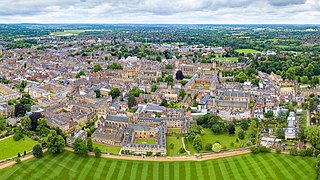
The ancient universities are British and Irish medieval universities and early modern universities founded before the year 1600. Four of these are located in Scotland, two in England, and one in Ireland. The ancient universities in Britain and Ireland are amongst the oldest extant universities in the world. The ancient universities in Britain are part of twenty-seven culturally significant institutions recognised by the British monarchy as privileged bodies of the United Kingdom.

The University of St Andrews is a public university in St Andrews, Scotland. It is the oldest of the four ancient universities of Scotland and, following the universities of Oxford and Cambridge, the third-oldest university in the English-speaking world. St Andrews was founded in 1413 when the Avignon Antipope Benedict XIII issued a papal bull to a small founding group of Augustinian clergy. Along with the universities of Glasgow, Aberdeen, and Edinburgh, St Andrews was part of the Scottish Enlightenment during the 18th century.

Trevelyan College is a college of Durham University, England. Founded in 1966, the college takes its name from social historian George Macaulay Trevelyan, Chancellor of the university from 1950 to 1957. Originally an all-female college, the college became fully mixed in 1992.
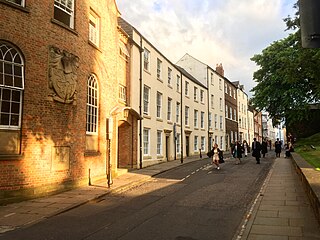
St Chad's College is one of the two recognised colleges of Durham University. Founded in 1904 as St Chad’s Hall for the training of Church of England clergy, the college ceased theological training in 1971 and now accommodates students studying the full range of Durham University courses. It is the smallest Durham college by number of undergraduates, but has extensive college library facilities and a strong academic record.

Van Mildert College is a college of Durham University in England. Founded in 1965, it takes its name from William Van Mildert, Prince-Bishop of Durham from 1826 to 1836 and a leading figure in the University's 1832 foundation. Originally an all-male college, it became co-educational in 1972 with the admission of female undergraduates.
A collegiate university is a university in which functions are divided between a central administration and a number of constituent colleges. Historically, the first collegiate university was the University of Paris and its first college was the Collège des Dix-Huit. The two principal forms are residential college universities, where the central university is responsible for teaching and colleges may deliver some teaching but are primarily residential communities, and federal universities where the central university has an administrative role and the colleges may be residential but are primarily teaching institutions. The larger colleges or campuses of federal universities, such as University College London and University of California, Berkeley, may be effectively universities in their own right and often have their own student unions.
A residential college is a division of a university that places academic activity in a community setting of students and faculty, usually at a residence and with shared meals, the college having a degree of autonomy and a federated relationship with the overall university. The term residential college is also used to describe a variety of other patterns, ranging from a dormitory with some academic programming, to continuing education programs for adults lasting a few days. In some parts of the world it simply refers to any organized on-campus housing, an example being University of Malaya.

A great hall is the main room of a royal palace, castle or a large manor house or hall house in the Middle Ages, and continued to be built in the country houses of the 16th and early 17th centuries, although by then the family used the great chamber for eating and relaxing. At that time the word "great" simply meant big and had not acquired its modern connotations of excellence. In the medieval period, the room would simply have been referred to as the "hall" unless the building also had a secondary hall, but the term "great hall" has been predominant for surviving rooms of this type for several centuries, to distinguish them from the different type of hall found in post-medieval houses. Great halls were found especially in France, England and Scotland, but similar rooms were also found in some other European countries.

The high table is a table for the use of fellows and their guests in large university dining halls in some universities, where the students eat in the main space of the hall at the same time. They remain the norm at Oxford, Cambridge, Dublin and Durham universities, which are all organized into colleges. Other academic institutions also have high tables.
At traditional Oxbridge and many Durham colleges, there may be two dinners in the college hall each evening, named informal hall and formal hall. Informal hall normally takes place before formal hall and does not require the wearing of a gown. It is typically self-service rather than being served by college servants. It is also relatively early in the evening, thus allowing students to pursue other activities later. In some colleges, this leads to its alternative name of first hall. Often the meal is also known by an informal name, such as Buttery, Trough, or just the Canteen.
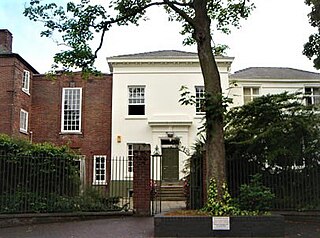
St Anselm Hall, known colloquially as Selms, is a traditional University of Manchester hall of residence situated in Victoria Park.

A common room is a group into which students are organised in some universities, particularly in the United Kingdom, normally in a subdivision of the university such as a college or hall of residence, in addition to an institution-wide students' union. They represent their members within the hall or college, operate certain services within these institutions such as laundry or recreation, and provide opportunities for socialising. There are variations based on institutional tradition and needs, but classically the following common rooms will exist:
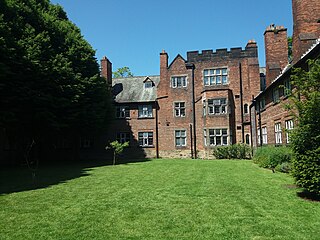
Hulme Hall is a traditional University of Manchester hall of residence situated at the Victoria Park Campus in Rusholme, Manchester, housing 300 students. It has a range of facilities including the John Hartshorne Centre: a 300 seat lecture theatre with attached seminar rooms; a library; Junior Common Room and study spaces; music room; old dining hall; the Victoria Park bar; and chapel.

Academic dress prescribed at the Trinity College Dublin follows a relatively complex protocol which, nonetheless, shares some particular characteristics with other universities in Ireland and with its sister institutions at the University of Oxford and University of Cambridge in the United Kingdom.

St Salvator's Hall is a student hall of residence at the University of St Andrews. It lies close to the quadrangle of the United College, St Andrews and St Salvator's Chapel, a foundation which was endowed by King James II of Scotland. The Hall is in an area between North Street and The Scores. Architecturally, it has been described as a "rambling Gothic dormitory".
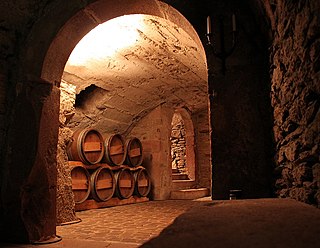
A buttery was originally a large cellar room under a monastery, in which food and drink were stored for the provisioning of strangers and passing guests. Nathan Bailey's An Universal Etymological English Dictionary gives "CELLARIST – one who keeps a Cella, or Buttery; the Butler in a religious House or Monastery." As the definition in John Stevens's The History of the Antient Abbeys shows, its initial function was to feed and water the guests rather than monks: "The Buttery; the Lodging for Guests". In a monastery a buttery was thus the place from which travellers would seek 'doles' of bread and weak ale, given at the exterior buttery door. The task of doling out this free food and drink would be the role of the butterer. At larger monasteries there would also be a basic hostelry, where travellers could sleep for free.

St Regulus' Hall is a hall of residence at the University of St Andrews in St Andrews, Fife, Scotland. It is located on Queen's Terrace, nearby to St Mary's College. The hall was built in 1868 and currently accommodates approximately 170 students.























